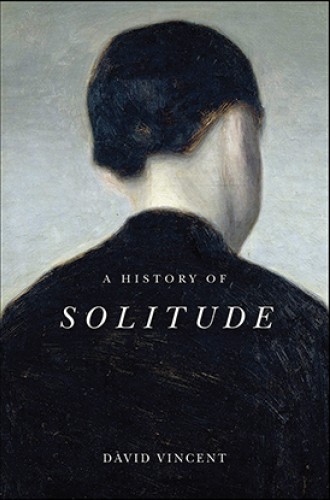Who is solitude for?
David Vincent’s exhaustive tome suggests that fruitful solitude has often been linked to privilege.
There is more than one way to read David Vincent’s book about solitude. The way I initially decided to read it—as a history book, chapter by chapter—probably isn’t the best approach.
The book is long and exhaustive. For instance, Vincent provides a mini history of sport and recreational walking in early industrial England. (He calls figures such as William Wordsworth and William Hazlitt “gentlemanly ramblers.”) There are many pages on urban walking and pet walking, both of which are usually solitary activities, as well as on the origins of the concept of vagrancy that followed. Eventually Vincent moves indoors, examining solitude in various domestic pastimes.
I was intrigued with the chapter called “Prayers, Convents, and Prisons” until I realized how narrow its focus is. It is largely dominated by an account of the reinstitution of enclosed religious orders in the mid-19th century and a discussion of a few English best sellers on “private prayer.” Later chapters, which focus on the 20th century, center too much around the lonely characters of Virginia Woolf novels and the experiences of spies in John le Carré’s fiction (although Thomas Merton and Philip Larkin also make appearances).
Read our latest issue or browse back issues.
But there’s another way to read A History of Solitude: paging through it to find themes of relevance to questions that are currently being raised about the pursuit (or sentence) of solitude. I found this strategy much more rewarding.
Vincent writes, for instance, about the enforced solitude of prisons, which is big business in 21st-century America. He trenchantly observes how impossible it is “for the inmate to comprehend the effects of solitude whilst still in solitude.”
He has much to say about the fear of solitude, which led to the dissolution of the monasteries in England during the Protestant Reformation. Those who desire to live in solitude have long been considered antisocial or even anti-societal, and despising them is an ancient form of anti-Catholicism. This attitude remained for centuries in Britain. The early 19th-century poet John Clare was no Catholic, but his own pursuit of solitude put him in trouble with the religious police: “I got a bad name among the weekly church goers forsaking the ‘church going bell’ and seeking the religion of the fields tho I did it for no dislike to church for I felt uncomfortable very often but my heart burnt over the pleasures of solitude.”
Vincent also covers medical concerns around solitude. Critics have often accused solitaries of disparaging human society, claiming that solitude is a form of madness (not unlike the old critique of monks and nuns for their vows of celibacy). Physicians used to routinely counsel against singleness as causing loneliness and leading to illness.
Criticism of solitude has a venerable history. It has often simply been deemed self-indulgent. But there are other, less negative critiques to be made of the solitary impulse and values. Vincent misses the opportunity to consider, for instance, how and why other religious traditions—Judaism, for one—chose not to have monks.
More generally, the book left me wanting more. For instance, there is no mention of what solitude means to various indigenous peoples across the world, nor does Vincent discuss how solitude shapes the explorers who settle on other people’s land. I found myself pondering the American frontier experience and wondering: What are the points of connection between solitude and exploitation?
I also wonder why Vincent doesn’t consider the relationship of humankind to the heavens or the seas. I’d love to ponder the solitude that has been imagined in the infinitude of space. We see this question arising repeatedly, from the Greek philosopher Parmenides to the psalmist to Nobel Prize–winning astronomer Andrea Ghez.
Some people may find Vincent’s book especially appealing because they regard solitude as an apolitical topic. But it isn’t beyond politics. As the religious right celebrated Supreme Court Justice Amy Coney Barrett during her confirmation hearings, touting her academic and professional accomplishments and praising her ability to raise a very large family of children at the same time, the connection between privilege and access to solitude became clear.
Vincent hints at these issues when he observes that solitary practices and lifestyles are “at once a product of modernity and a necessary condition of its success.” Improved communication networks, prosperity, and work opportunities—not to mention the slow dissolution of extended as well as nuclear family systems—have made fruitful solitude possible, at least for some people.






